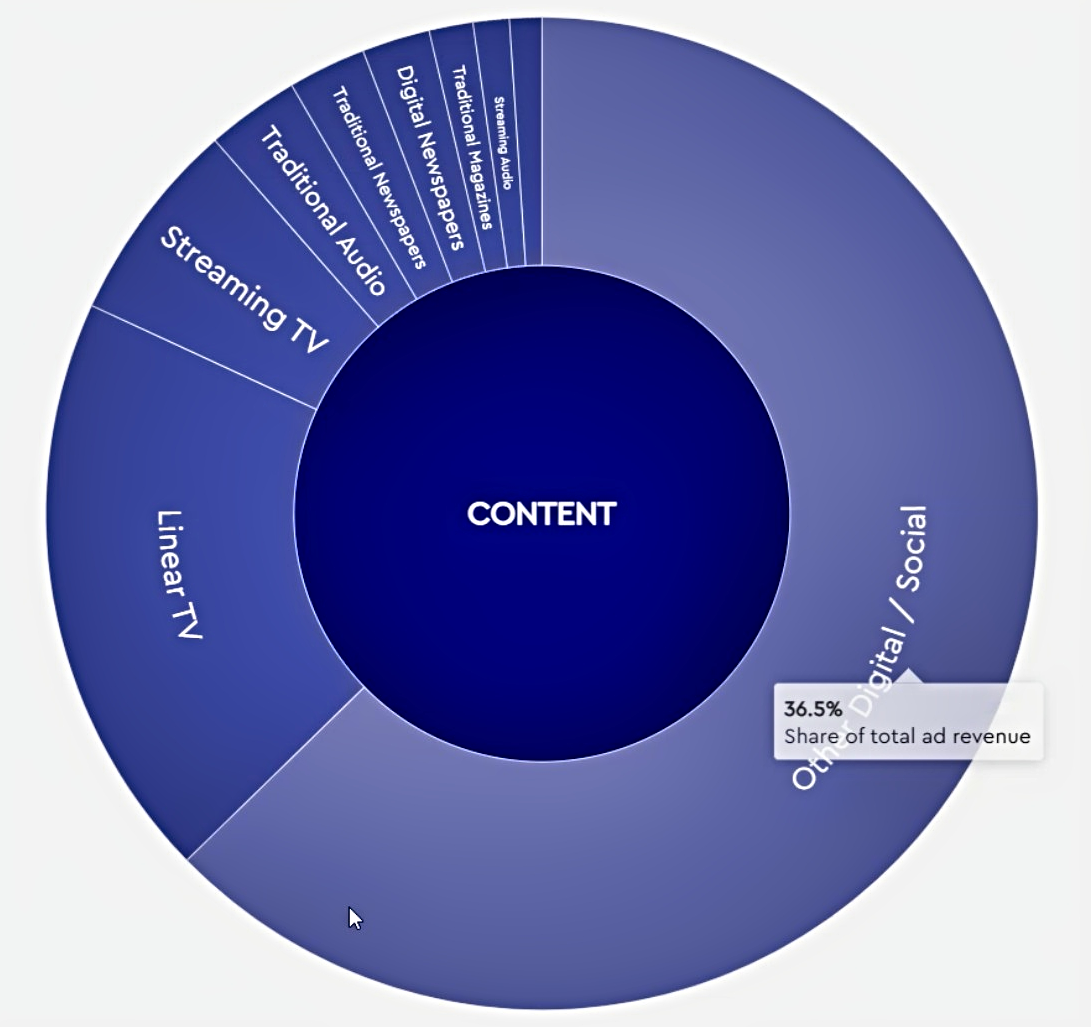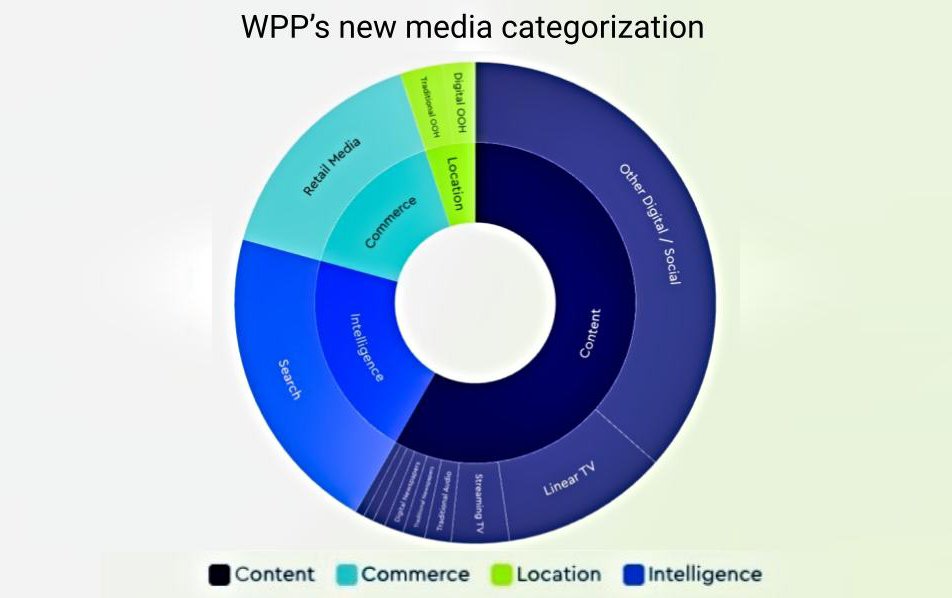
As someone who obsessed on the taxonomies the ad industry's
leading forecasters use to produce their estimates for ad spending, WPP Media's mid-year update had plenty for me to think about, especially what it means to be a content pro.
As part of a
reboot of WPP Media's categorizations of ad-supported media in its just-released mid-year update, Business Intelligence President Kate Scott-Dawkins unveiled a unique new taxonomy for thinking about
ad-supported media, dividing it into four main pillars -- content, commerce, location and intelligence -- each of which can be divided into fascinating sub-components (see chart below).
I'll
save the other three taxonomic pillars for another day, but this morning I'd like to focus on ad-supported media content, because it was one of the tipping point headlines WPP teased in its press
briefing, including the fact that -- for the first time ever -- "user-generated content" will account for a greater share of ad revenue than "professionally-produced content."
advertisement
advertisement
The statement
made me think about what professional vs. non-professional content actually is in the modern age of ad-supported media, and it did lead to some debate between Scott-Dawkins and myself, because if you
look at the pie chart she provided above, the "other digital/social" slice is in fact the largest, accounting for the lions share of all content-related ad spending, as well as more than a third of
all ad spending based on her new taxonomy.
"Define what you mean by professionals," I asked her, adding, "Because a lot of those creators are professionals. They're just long tail
professionals."
I asked, because while they may not be paid at the same level as professionally-produced content coming from the major studies, sports leagues, networks and streaming
platforms, etc., they are getting paid by brands to get integrated into their content. I mean, Mr. Beast may be the exception, but even micro-influencer content creators are getting paid by brands. By
some estimates, the paid influencers marketplace is more than $30 billion already.
Later, as part of a follow-up email exchange, Scott-Dawkins clarified that the lines are indeed "blurry" in
terms of what's pro vs. amateur when it comes to some UGC platforms. YouTube, for example, includes some professionally-produced content.
That said, even micro influencers generating a
smattering of views on YouTube are getting paid by the platform directly when they opt into its rev share model, and many of them also are being paid directly by brands as part of their paid
influencer budgets.
So if you ask me, the bottom line is that if you're trying to define what is professional vs. amateur ad-supported content, it gets a little weird.
